Learn how to draw an easy 3d sphere step by step with shading in this art lesson. Find out how to sketch a basic 3d sphere or ball and shade it in as well.
Practice drawing a sphere from a still life and learn all the tips and tricks to make drawing a ball easier. This step by step tutorial will teach you how to draw a sphere or ball in simple steps.
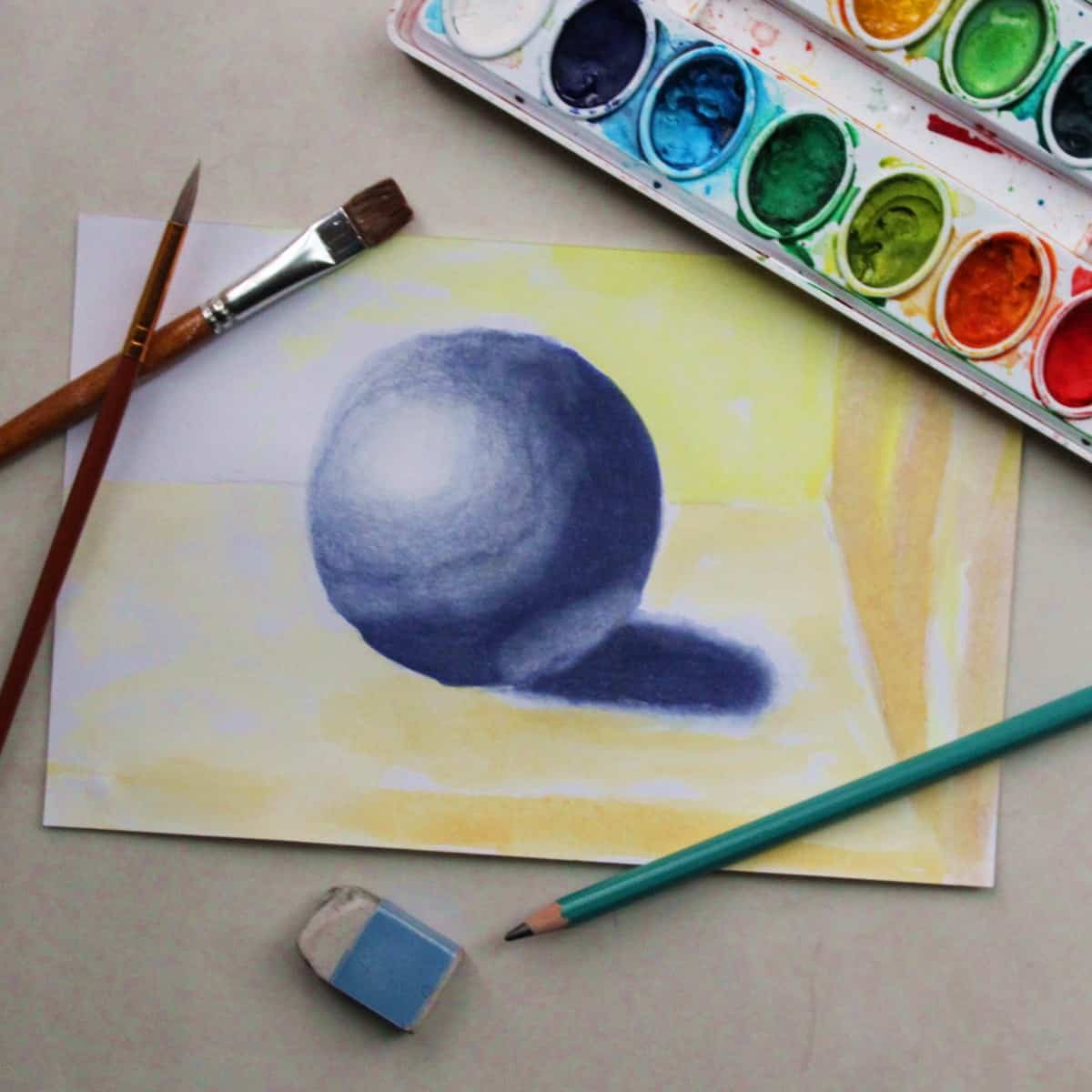
Jump to:
In this quick online video art class, practice the basic skill of sketching a 3d ball or sphere. You will also learn how to shade it in to make it look more realistic.
While it may seem too simple for some people, it is an important first step in learning how to draw. Sketching balls, spheres and other basic shapes will help you see more accurately and become a better artist.
Don’t worry if your drawing of a ball is not perfect. It is all about training your hand and mind to work together.
Just keep practicing. And have fun doing it!
Why is drawing a sphere important?
Learning how to draw a sphere correctly is important drawing skill. It helps you learn how to see objects in space and then depict the shape and value into paper.
More importantly, spheres translate into many other objects that you might want to draw or paint.
Within still lives, spheres can be seen in many fruits, vegetables, eggs, bowls, cups and pitchers and other objects.
In figures, the sphere is necessary for accurately drawing shoulders, elbows, knees, heads, eyes, noses and much more.
Spheres are also commonly seen in planets, water drops, bubbles, balls, balloons, light bulbs and stones. Think about a setting sun or rising moon.
Believe it or not students in art schools actually spend many hours drawing from still lives of spheres.
After you have mastered spheres, drawing other objects and figures will be easier. Drawing a sphere is a basic drawing ability that is fundamental to learning how to sketch, draw, paint and even sculpt well.
Materials
The materials that you need for this lesson include:
- Pencil
- Paper (Drawing paper is best but you can use whatever you have available. I am using a 5.5 x 8.5 inch spiral bound sketchbook with 60lb paper)
Art Lesson
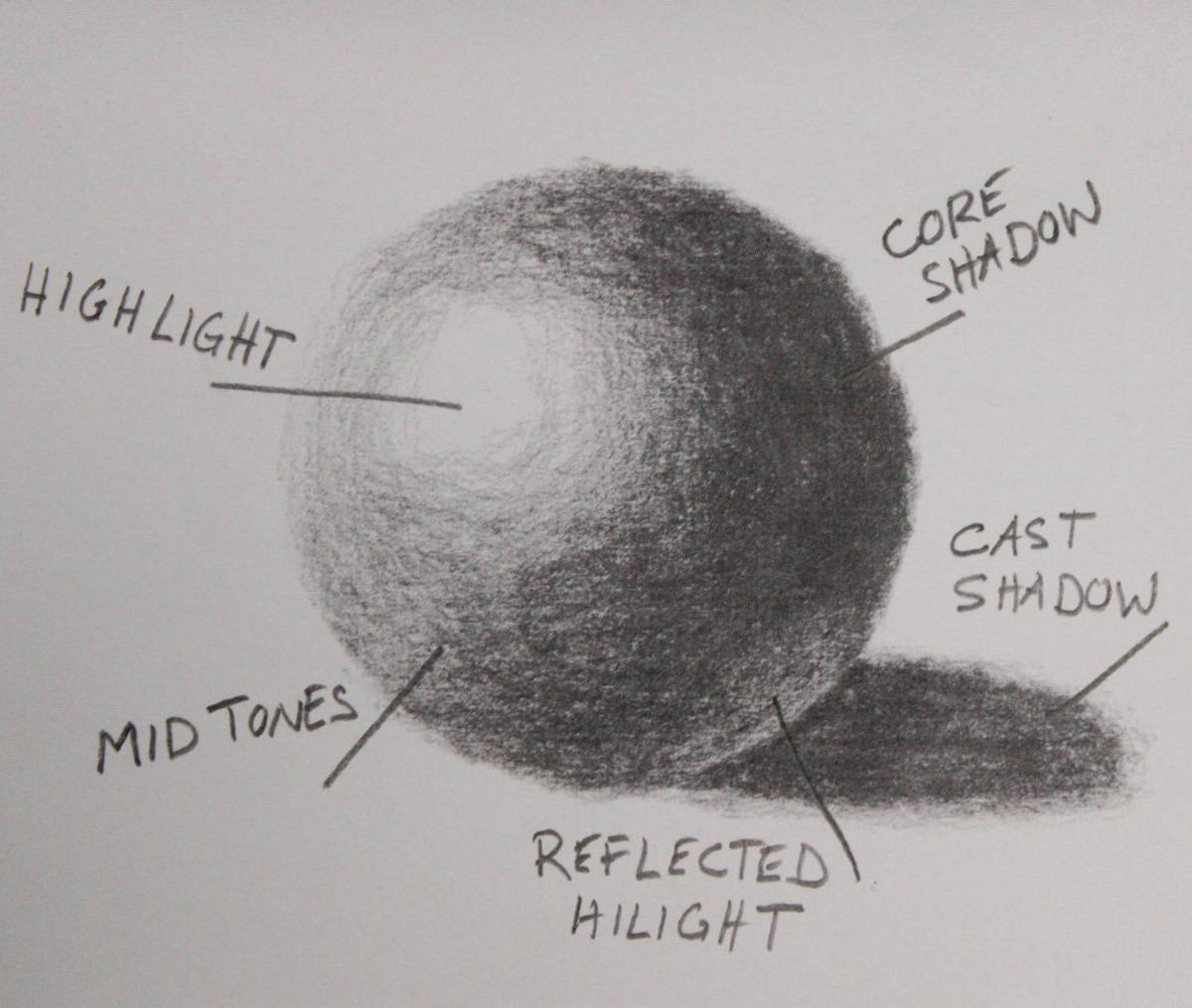
When drawing a sphere keep in mind the different highlighted and shadowed areas. Highlights, mid tones, core shadow (the darkest shaded area of the sphere), cast shadow and reflected highlights should all be visible in your drawing.
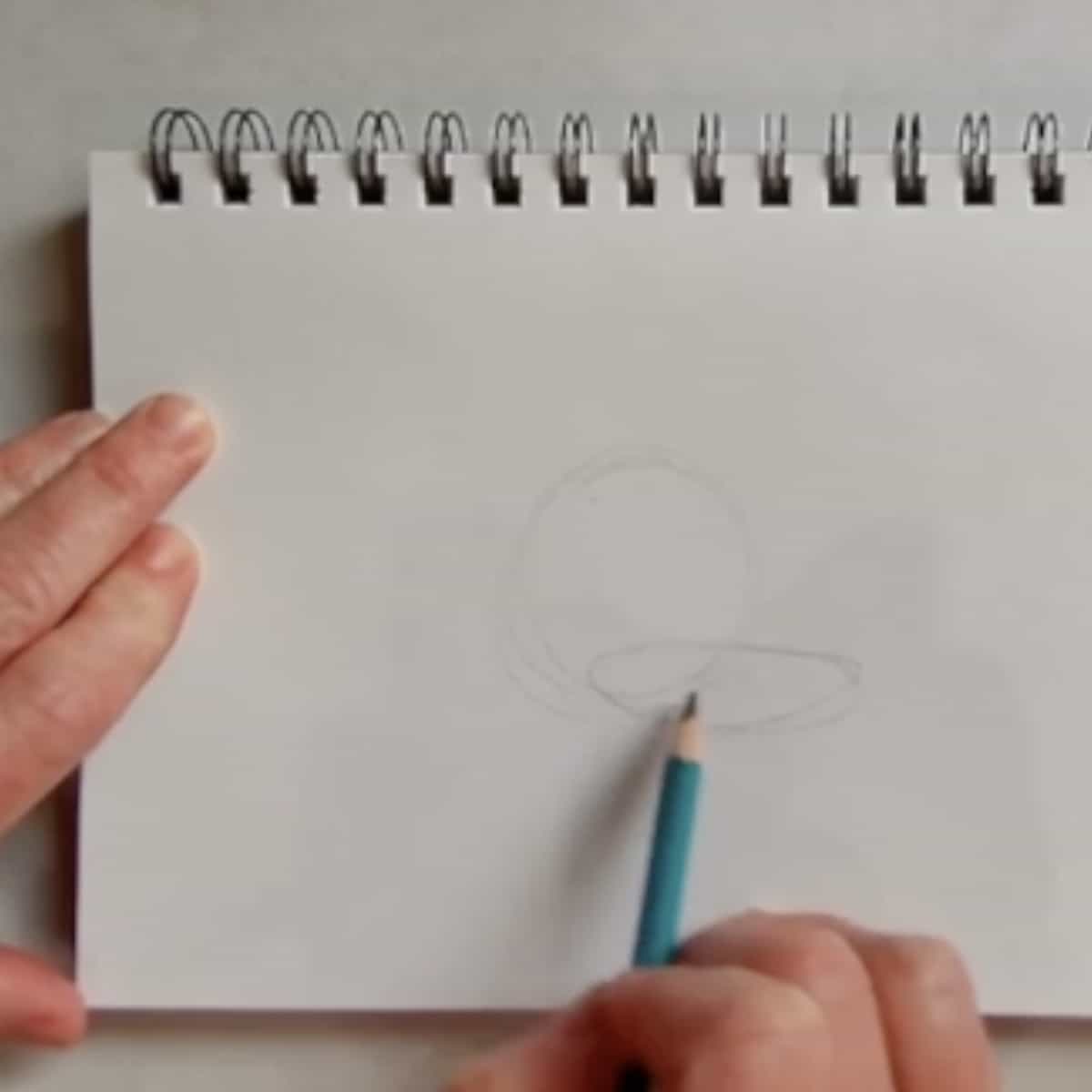
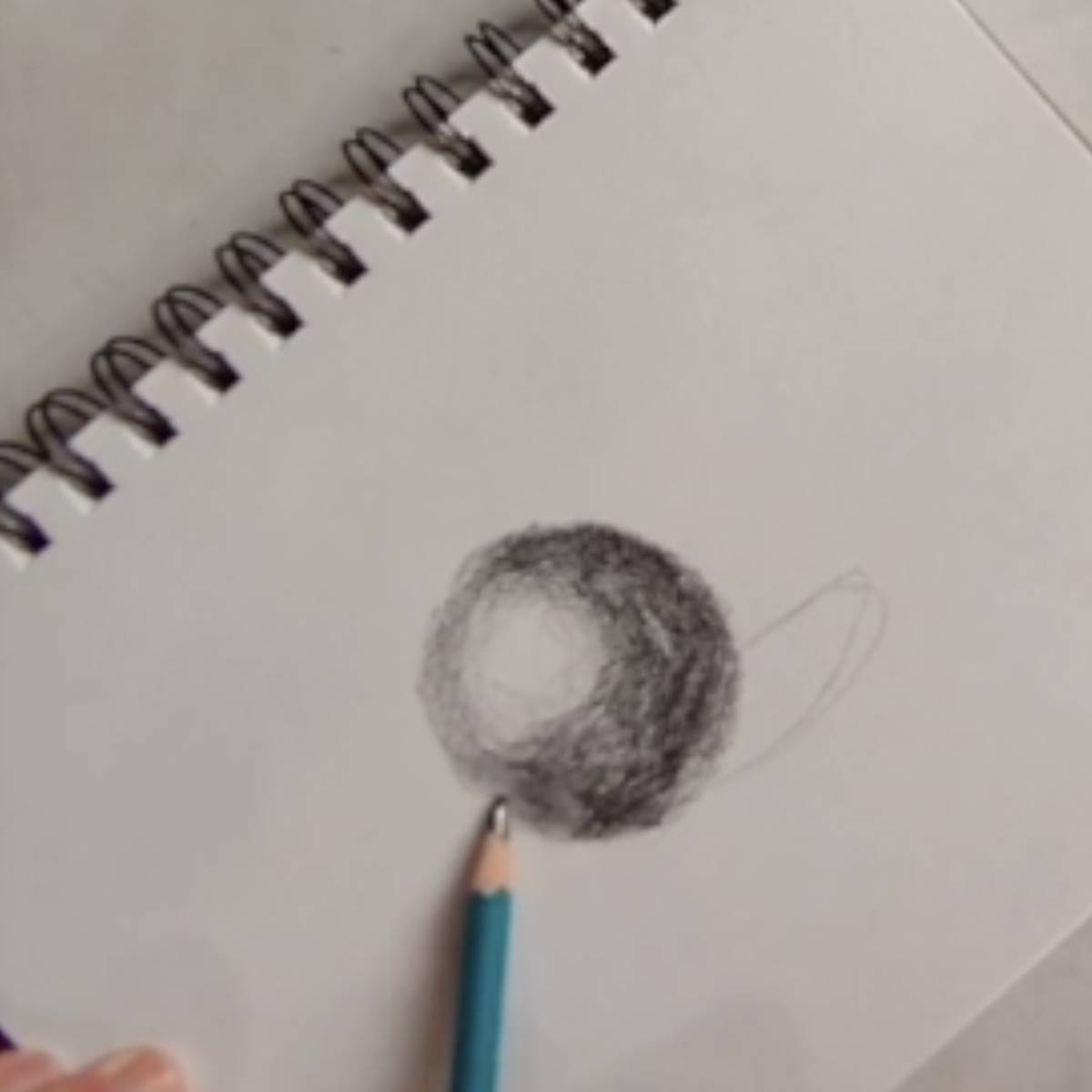
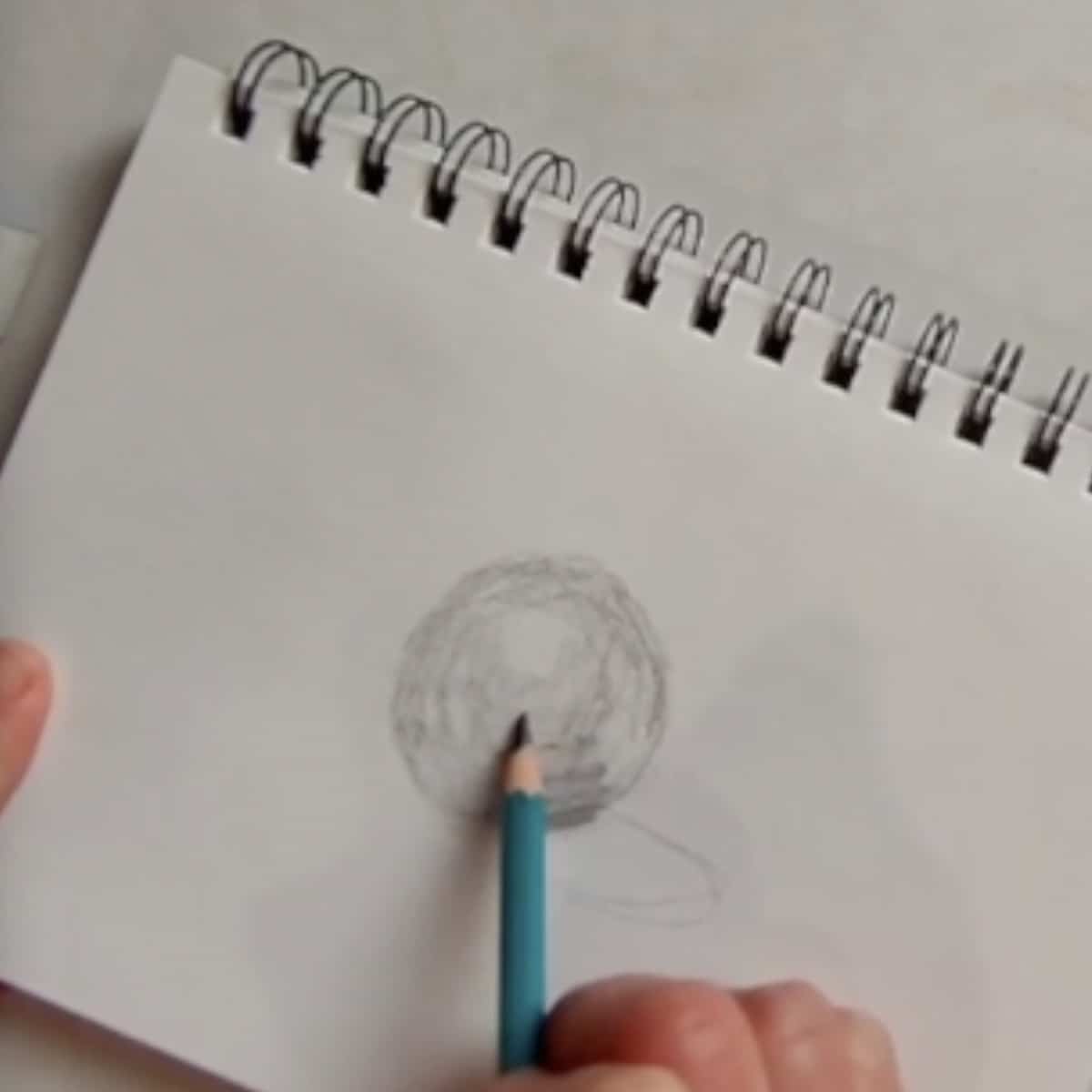
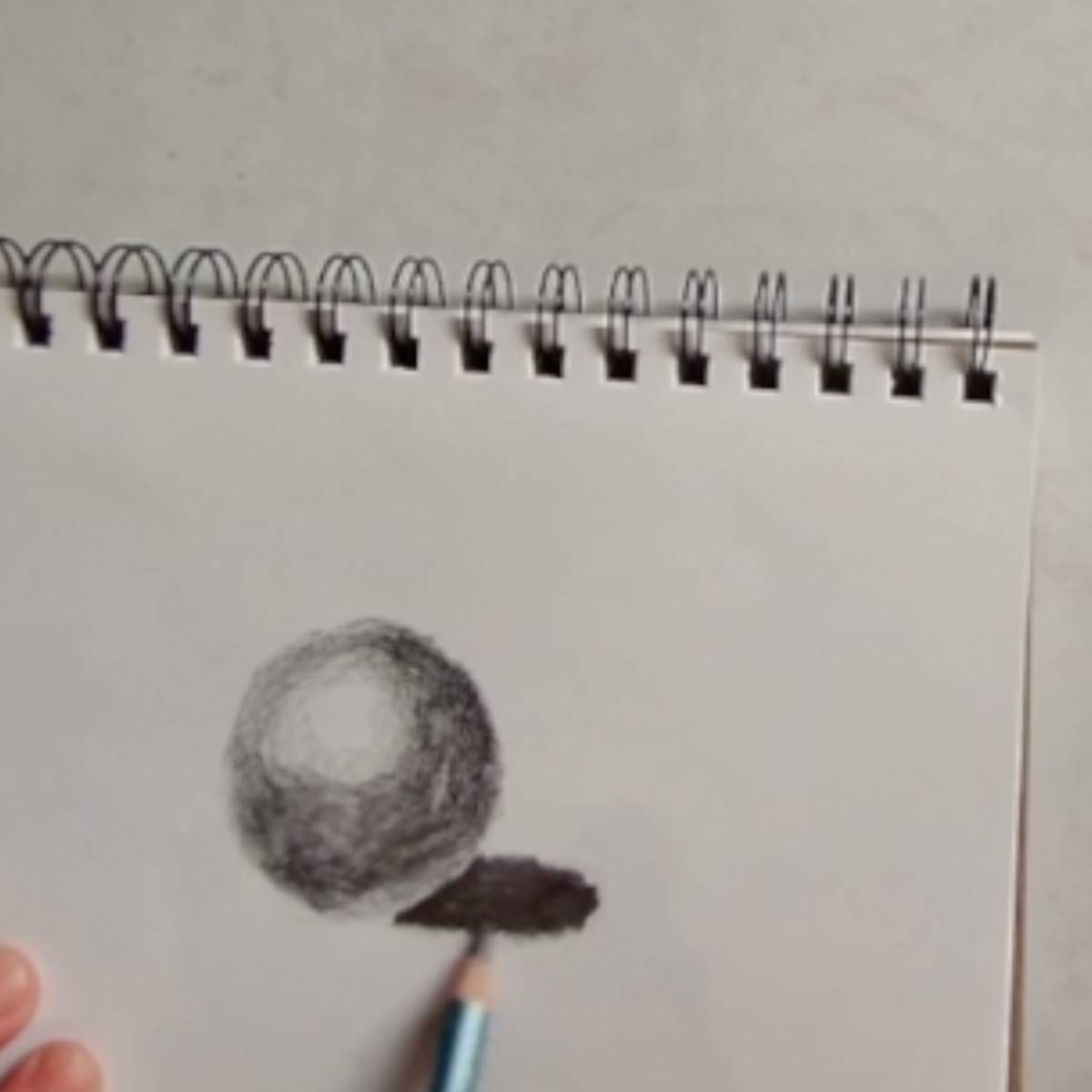
- Sketch in a circle for the sphere or ball shape, drawing lightly.
- Sketch in an ellipse at the base of the circle for the shadow.
- Determine where your light source is coming from. Leave a white white highlight where light is hitting the sphere or ball.
- Shade in the darkest areas first. Use short strokes that follow the counter of the circle.
- Work from the outside of the circle in toward the highlight. Use lighter and lighter shading as you get closer to the highlight.
- Go over all the shaded area again making the dark areas darker. Try to get an even tone as you transition from darks to lights.
- Leave an area on the bottom darker part of the sphere just a bit lighter than the surrounding dark values. This is the reflected highlight. Light is hitting the table (or surface) and bouncing back onto the sphere leaving it a little lighter.
- Darken the core shadows of the sphere even more.
- Lastly, darken in the ellipse to make the shadow. Shade in more lightly at edges of the shadow to soften it a little bit.
Variations
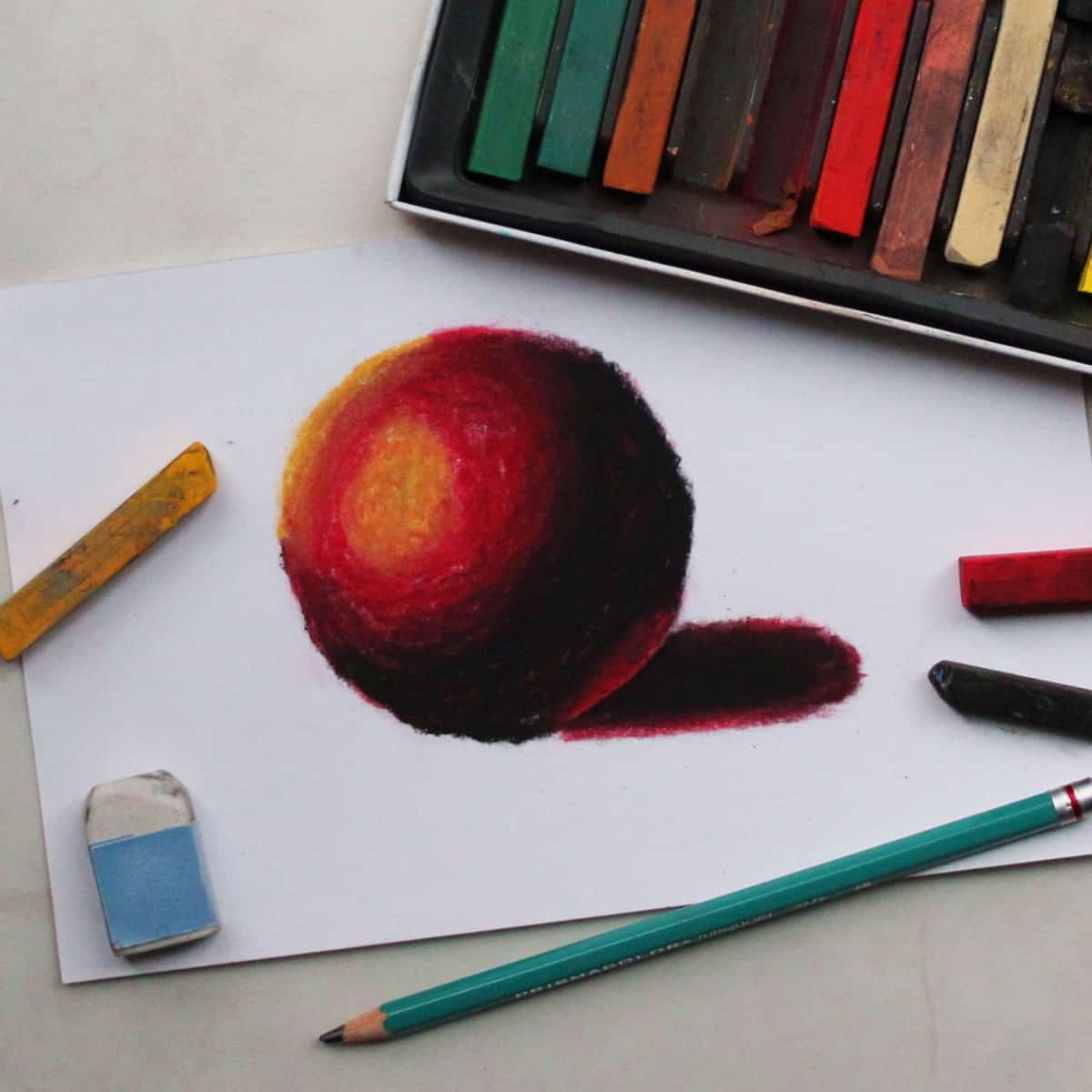
- Add color to your sphere by painting it in with watercolor or acrylic paint.
- Draw a sphere and then color in the value using soft pastels, oil pastels or colored pencils.
- Add some background in behind your sphere. Start with a horizon line and expand from there. You could add walls, a table cloth, windows etc.
Tips and tricks
- Move from your shoulder and don’t wiggle your wrist when drawing the initial circle and eclipse. This will help you make more accurate shapes.
- When drawing in the initial shapes make very light lines. They will be easier to erase if you need to adjust your sketch.
- Move your paper as you work to make the shading easier.
- Don’t forget to leave the reflected highlight. This is important to make your 3d sphere look more realistic.
Drawing a Sphere Video
Transcript
Read Transcript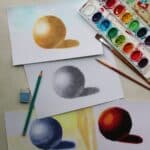
Learn How to Draw an Easy 3d Sphere Step by Step with Shading
Equipment
- Pencil
- Paper (Drawing paper is best but you can use whatever you have available. I am using a 5.5 x 8.5 inch spiral bound sketchbook with 60lb paper)
Instructions
- Sketch in a circle for the sphere or ball shape, drawing lightly.
- Sketch in an ellipse at the base of the circle for the shadow.
- Determine where your light source is coming from. Leave a white white highlight where light is hitting the sphere or ball.
- Shade in the darkest areas first. Use short strokes that follow the counter of the circle.
- Work from the outside of the circle in toward the highlight. Use lighter and lighter shading as you get closer to the highlight.
- Go over all the shaded area again making the dark areas darker. Try to get an even tone as you transition from darks to lights.
- Leave an area on the bottom darker part of the sphere just a bit lighter than the surrounding dark values. This is the reflected highlight. Light is hitting the table (or surface) and bouncing back onto the sphere leaving it a little lighter.
- Darken the core shadows of the sphere even more.
- Lastly, darken in the ellipse to make the shadow. Shade in more lightly at edges of the shadow to soften it a little bit.
Lesson Downloads
For More Practice
- Draw several spheres together.
- Change the direction of the light source on your sphere. Sketch it with the light hitting the bottom, directly in the middle front or the top. What changes in the value if you place the light directly behind the sphere?
- Set up your own still life using a playground ball, globe or styrofoam craft ball.
- Challenge yourself by drawing a bowl of round fruit or eggs from a still life.
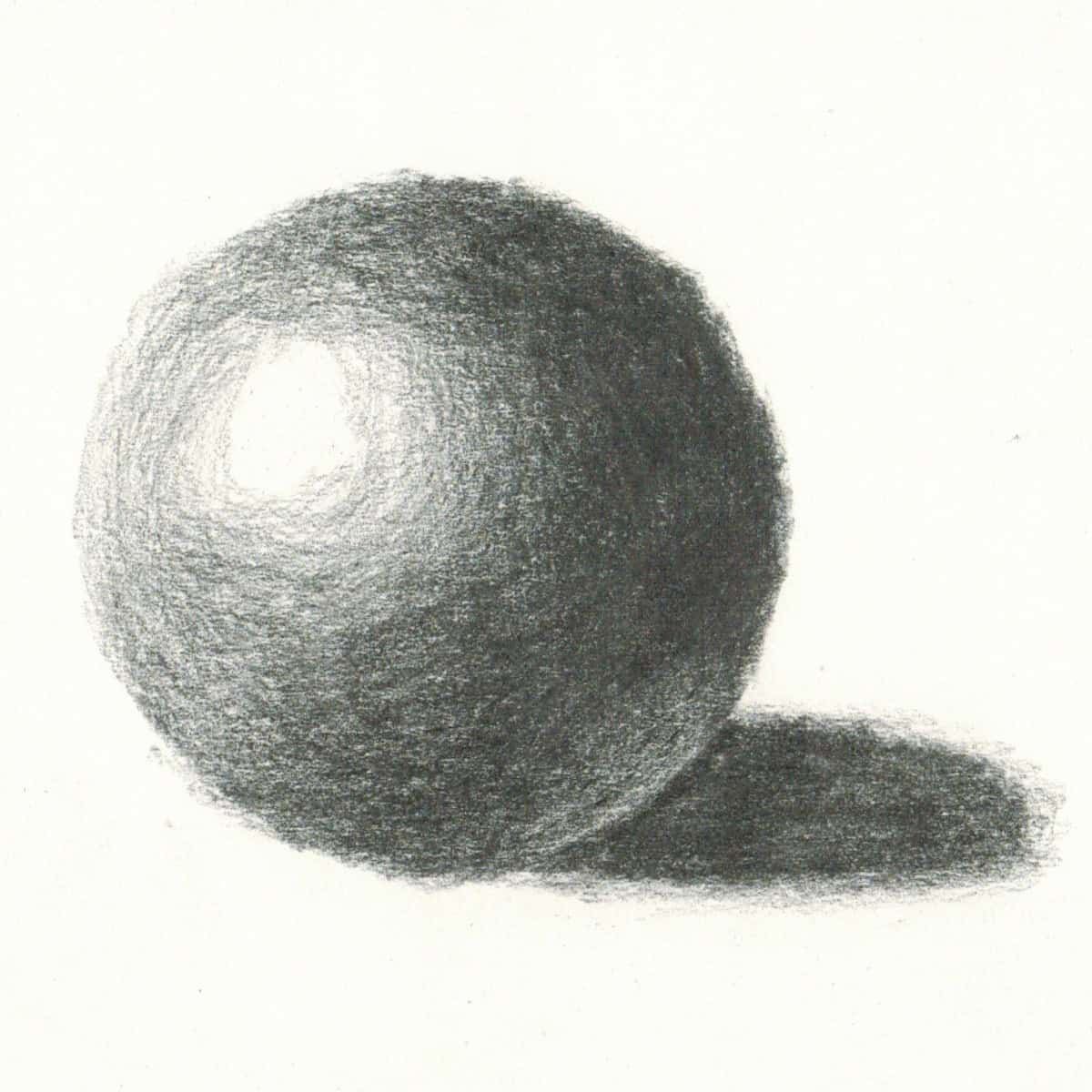
Frequently Asked Questions
Sketch in a circle for the sphere or ball shape, drawing lightly. Sketch in an ellipse at the base of the circle for the shadow. Then shade it in to make it appear 3 dimensional.
To shade in a sphere leave a white white highlight where light is hitting it. Shade in the darkest areas first.
Use short strokes that follow the counter of the circle. Try to get an even tone as you transition from darks to lights.
Leave a reflected highlight on the bottom of the sphere just a bit lighter than the surrounding dark values. Lastly, darken in the ellipse to make the shadow.
Learning how to draw a sphere correctly is important drawing skill. Spheres and balls also translate into many other objects that you might want to draw or paint.
Spheres can be seen in fruit, eggs, bowls, cups, figures, shoulders, knees, heads, eyes, noses, planets, water drops, bubbles, light bulbs and stones and much more.
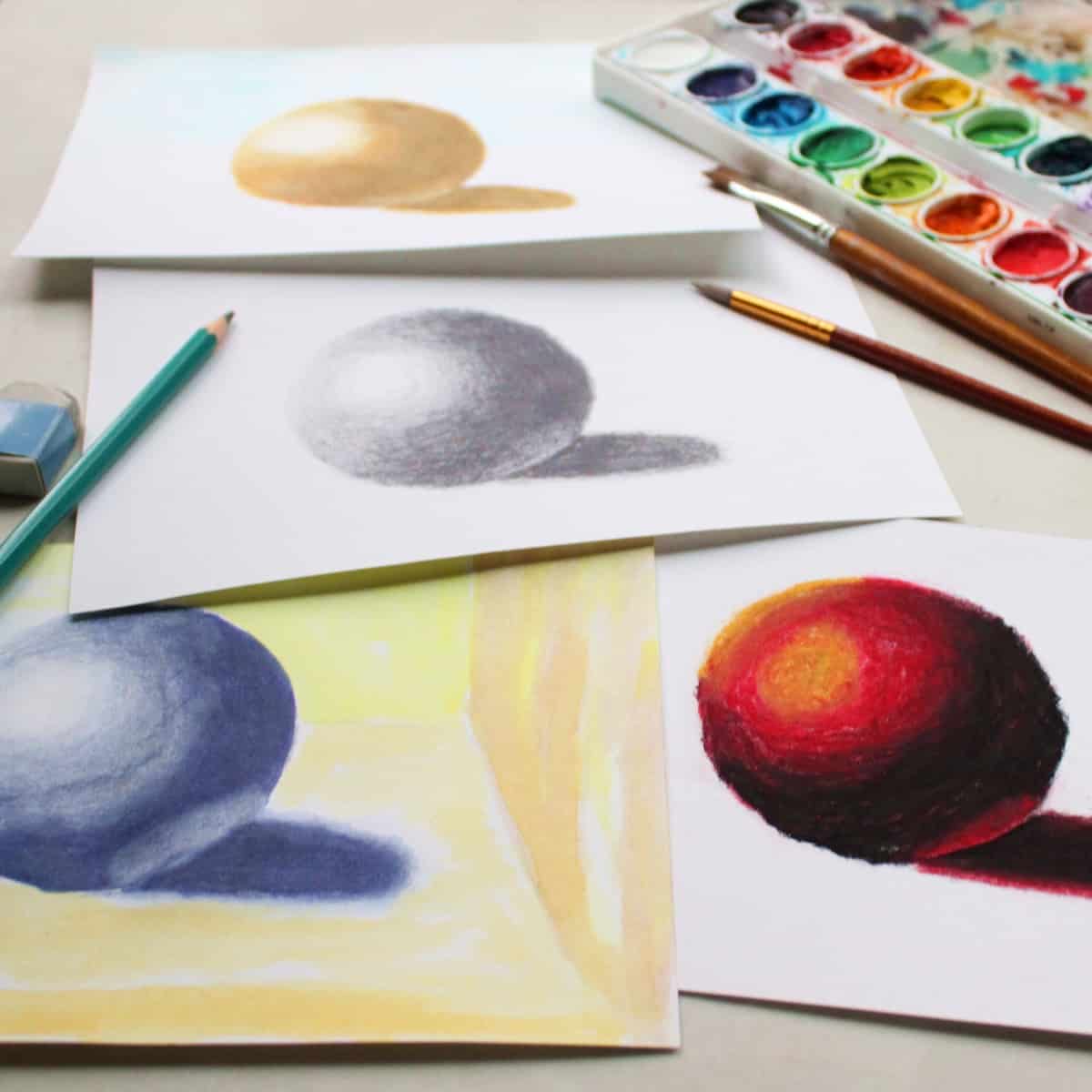
You also might like
- Cross Hatching Drawing
- Drawing Paper (Everything You Need to Know)
- How to Draw a Cylinder
- How to Draw a Box
- Learn How to Draw an Eye
Please leave your questions, comments and reviews below!


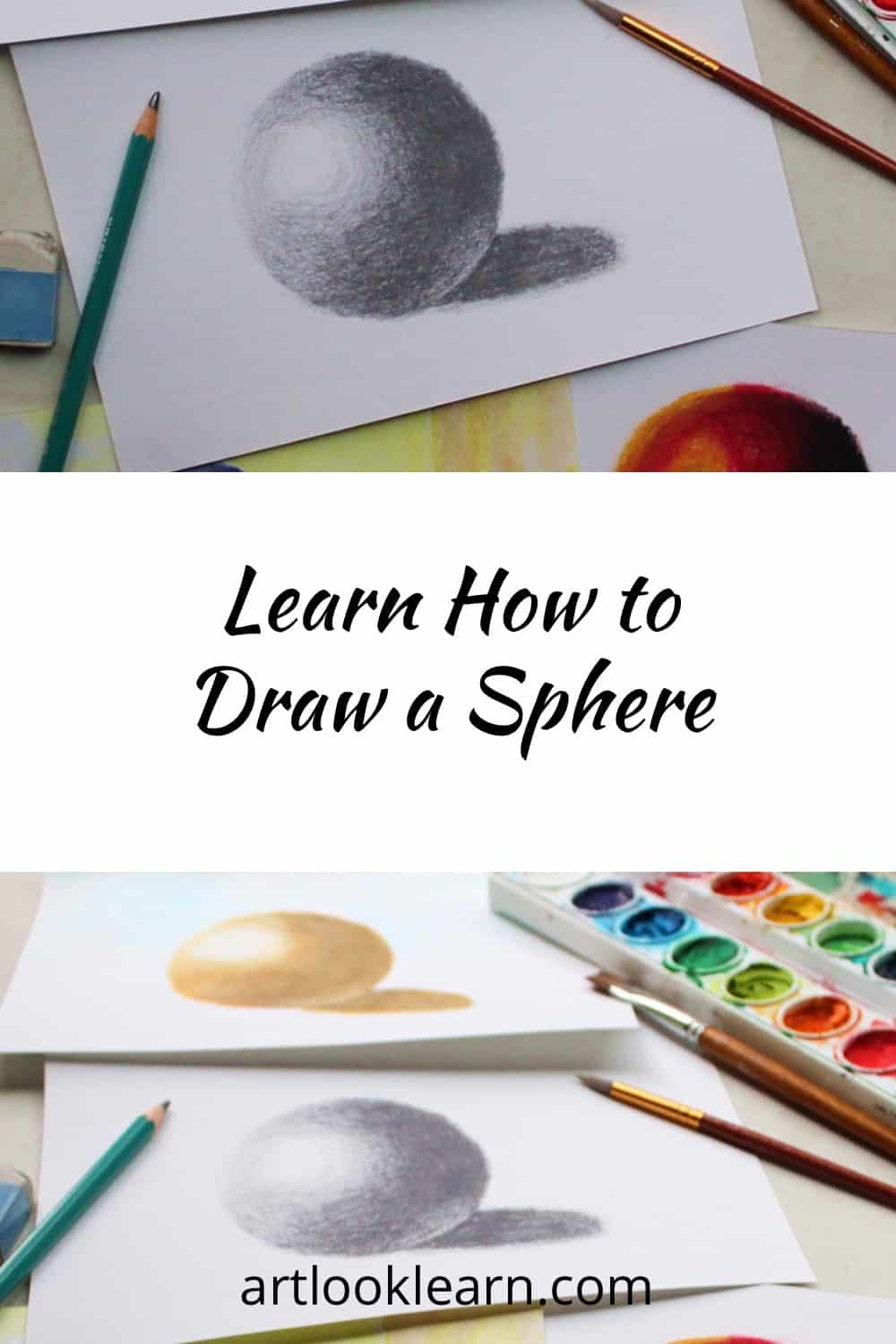
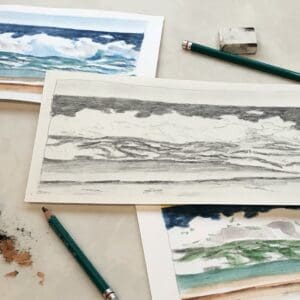
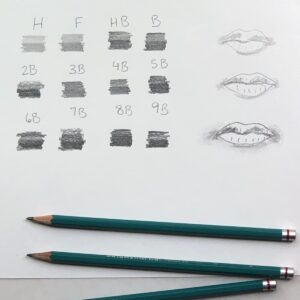
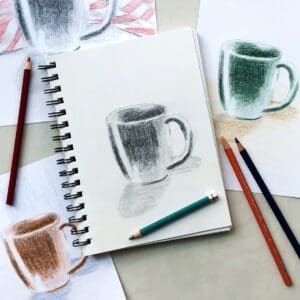
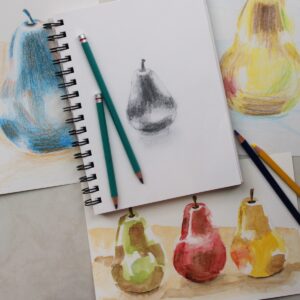
Jordan
Great lesson. Looks like I need to practice this shading more but I really like it.